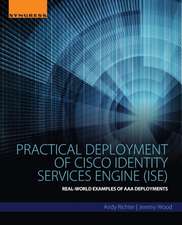Two-Factor Authentication
Autor Mark Stanislaven Limba Engleză Paperback – 4 mai 2015
Preț: 131.02 lei
Preț vechi: 163.78 lei
-20% Nou
Puncte Express: 197
Preț estimativ în valută:
25.07€ • 26.24$ • 20.87£
25.07€ • 26.24$ • 20.87£
Carte disponibilă
Livrare economică 10-24 martie
Preluare comenzi: 021 569.72.76
Specificații
ISBN-13: 9781849287326
ISBN-10: 1849287325
Pagini: 114
Dimensiuni: 129 x 198 x 6 mm
Greutate: 0.12 kg
Editura: It Governance Ltd
ISBN-10: 1849287325
Pagini: 114
Dimensiuni: 129 x 198 x 6 mm
Greutate: 0.12 kg
Editura: It Governance Ltd



























